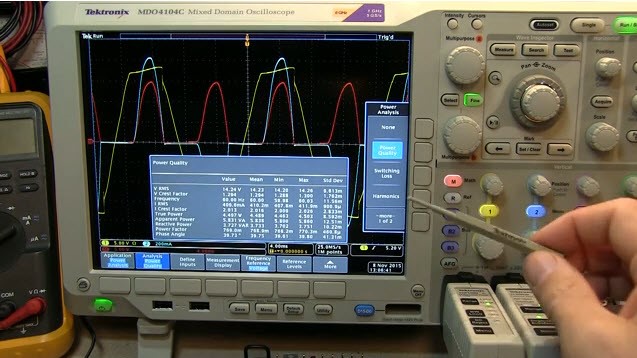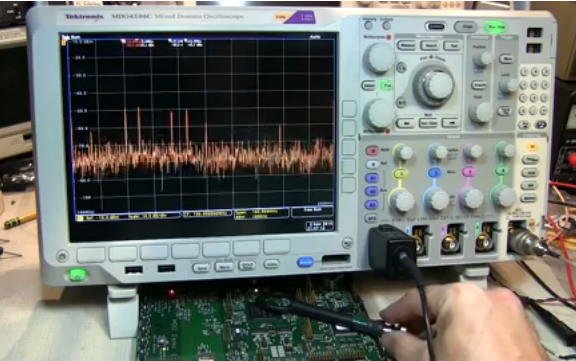

MOSFETs in a switch-mode power supply dissipate power while they switch. To keep efficiency high, the switching time needs to be kept short. But short switching time translates into high slew rates, which means high-frequencies. These high frequencies can “escape” from a power supply and cause EMC problems or problems with output noise. If you’ve been struggling to balance these factors in your design, you might be interested in a pair of roughly four-minute videos that one of our senior applications engineers has put together.
Measurements like switching loss can be done manually, using the math and measurements available on most digital oscilloscopes. To make the measurements easier and more repeatable, some oscilloscopes can be equipped with add-on power supply analysis measurement software that enables them to make automatic power measurements. The scope sets up the measurement and does the math to come up with important power supply parameters such as harmonics, power factor, switching and conduction loss, and ripple. In the new video, “How to Perform Power Supply Measurements with an MDO4000 and DPO4PWR,” you’ll get a quick overview of many of these automatic measurements.

The video “How to Perform Power Supply Measurements with an MDO4000 and DPO4PWR”, shows how to properly zero and deskew probes and demonstrates several power supply measurements
To evaluate the RF switching noise of a power supply (or any other device under test), a spectrum analyzer with a near-field probe has traditionally been the tool of choice. Spectrum analyzers generally have very good dynamic range, allowing them to pick up very small signals. Mixed domain oscilloscopes such as the MDO3000 and MDO4000 can also be outfitted with built-in spectrum analyzers. They also have enough dynamic range to use them with near-field antennas, a.k.a. near-field probes, to look for unwanted emissions. The video “How to Locate Sources of Emissions for EMI Troubleshooting Using an MDO4000” demonstrates using an MDO4000C with a near-field probe to correlate time domain signals with RF emissions.

“How to Locate Sources of Emissions for EMI Troubleshooting Using an MDO4000” shows how to use a near-field probe to help locate potential causes of unwanted emissions.
Enjoy these two new videos, and let us know if you have ideas for new ones along the same lines in the comments below.


